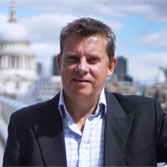A stroll along East London's Lee Navigation; for history, hipsterdom, and London's only lighthouse...

London's only lighthouse - formerly for training lighhouse keepers, and HQ for Faraday. Photo My Bathroom Wall
The River Lee is the easternmost major tributary of the London's River Thames. It flows from the Chiltern Hills down through east London to where it joins the River Thames opposite from the O2 Arena - the vast canvas structure formerly known as the Millennium Dome.
The Lee is little known by visitors to London, and frankly most Londonder's are fuzzy on it too, but a walk along its banks is a brilliant way to discover a uniquely historic and rejuvenated part of the capital. And never fear - as this is no dry history walk, as there are cosy cafes, hipster bars, pop-up restaurants, and a flourishing sports and arts scene to dicover along its banks.

A metal tree growing out of a taxi is one of many pieces of public art at Trinity Buoy Wharf. Photo My Bathroom Wall
Let's start at a once forlorn industrial area at the Lee's mouth - the fascinating Trinity Buoy Wharf. It was opened in 1863 and was where the buoys used to assist shipping navigate the River Thames were maintained and stored. Now the wharf a thriving arts quarter, with buildings used by English National Opera, the Royal Drawing School, The Faraday School and the university of East London.
The wharf area is cut off on three sides by water, and the main road leading to it doesn't look at all promising, but the start is marked by a taxi pierced by a tree, after which the sprouting of graffiti art and installations let you know you are heading in the right direction.
Ten minutes later and you'll find yourself walking amongst a jumble of heritage buildings, with an office block made from jauntily arranges shipping containers set back from the water, several vintage lighthouse ships, and an actual lighthouse.

Perhaps London's smallest museum - the Faraday Effect is an evocation of the spirit of Faraday. Photo My Bathroom Wall
Next door is a shed-sized art installation called the Faraday Effect, dedicated to Michael Faraday. This whirlwind of a man discovered electromagnetic induction, which is the principle behind the electric transformer and generator. He was the scientific advisor to Trinity House and conducted his experiments in the roof adjacent to the test lighthouse here for nigh on thirty years.
On the other side of the Lighthouse is Fat Boy's Diner, where you can get reasonably priced American fare served in a red and silver period trailer. There are burgers, hot dogs, wraps salads and milkshakes and milkshakes - the original 6oz burger with fries is £7.50. The other eatery at the wharf is the Bow Creek Cafe, which has created a cosy collection of wooden furniture with a small outside space too. It serves home made snacks and sandwiches, but unfortunately, like the American diner too, it hasn't an alcohol licence.
Half way up the lighthouse is the unexpected surprise of a large wood-beamed room to the side, containing a carefully placed array of Tibetan singing bowls that together form a soundscape and installation called the Longplayer. The project provides a soothing backdrop to your visit to the lighthouse and is envisaged to play for a thousand years. It began playing at midnight on the millennial New Year's Eve in 1999, so you've plenty of time to see and hear it for yourself.
Carry on up the modest staircase for outstanding views of the Thames and across to the Greenwich Peninsula - dominated by the white dome and latticed yellow spikes of the O2 Arena.

View from the lighhouse across the Thames to the O2 Arena. Photo My Bathroom Wall
 |
Trinity Buoy Wharf is on the north bank of the River Thames in East London, a 15-minute walk from Canning Town tube station. Exit the tube station and walk over the red footbridge to London City Island - walk through the development and follow the signs. See Trinity Buoy Wharf and Visit Lee Valley |





